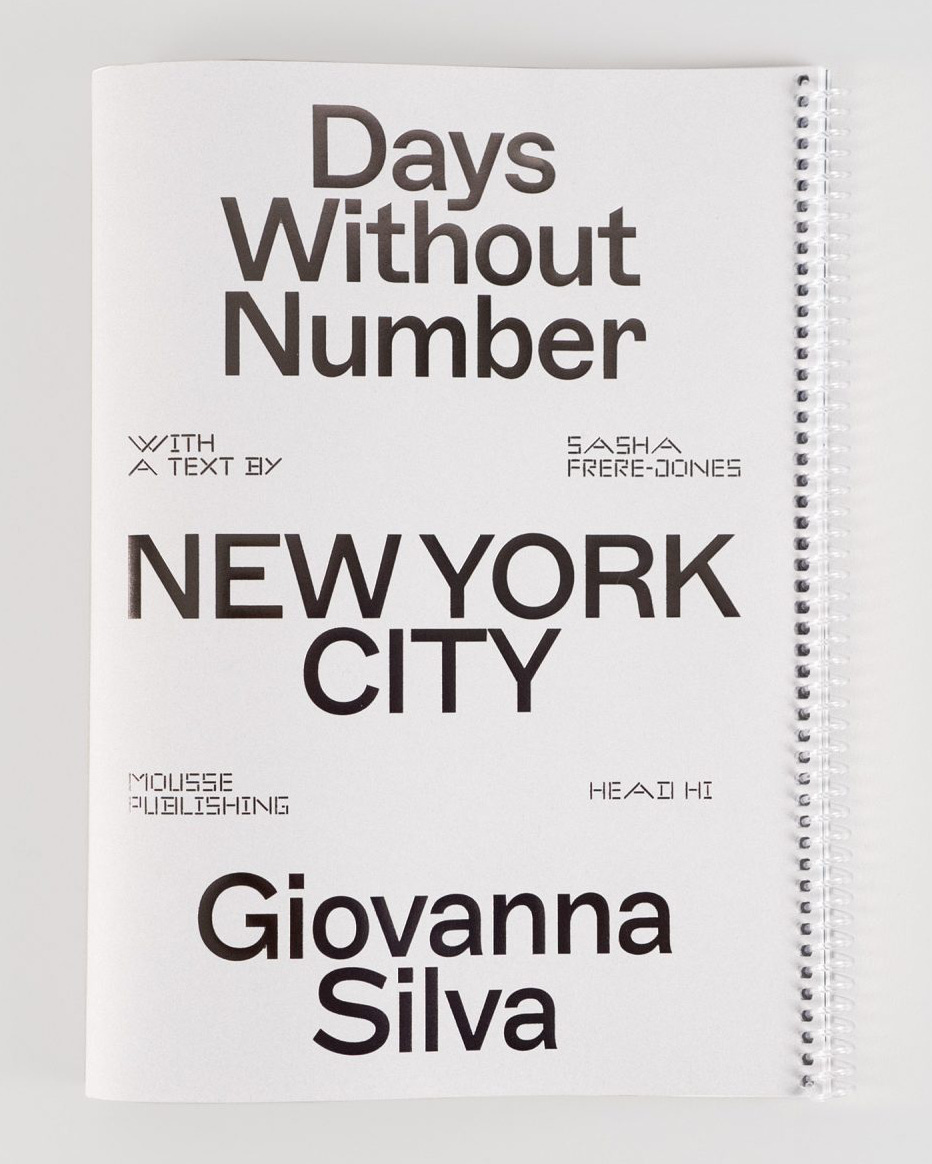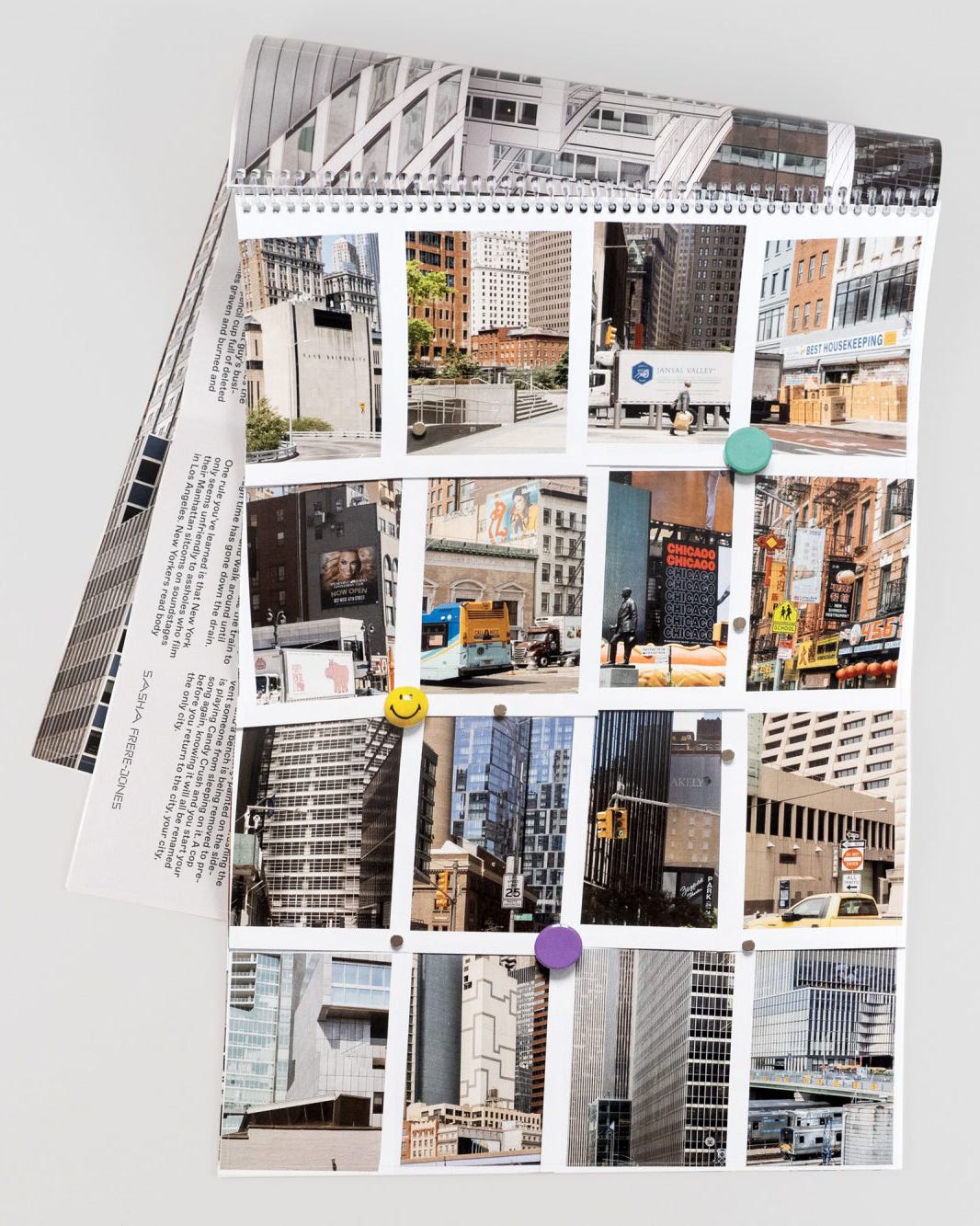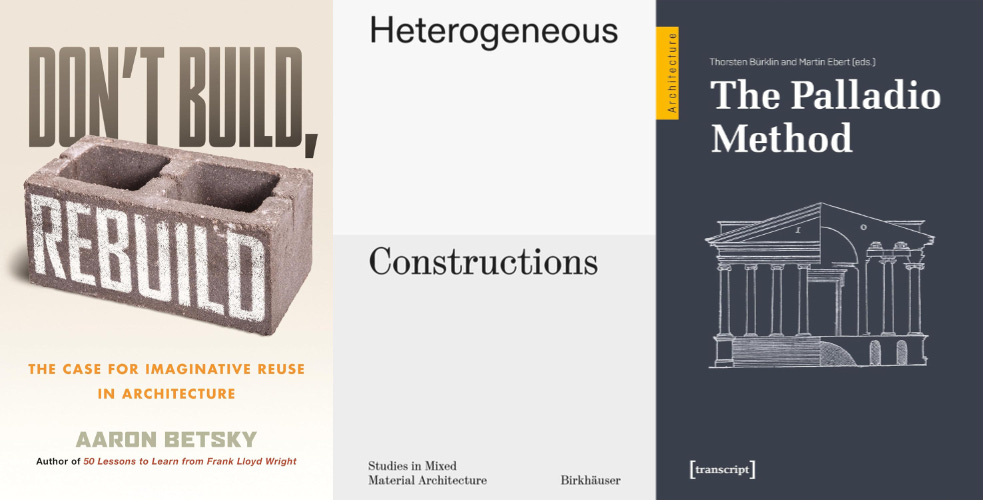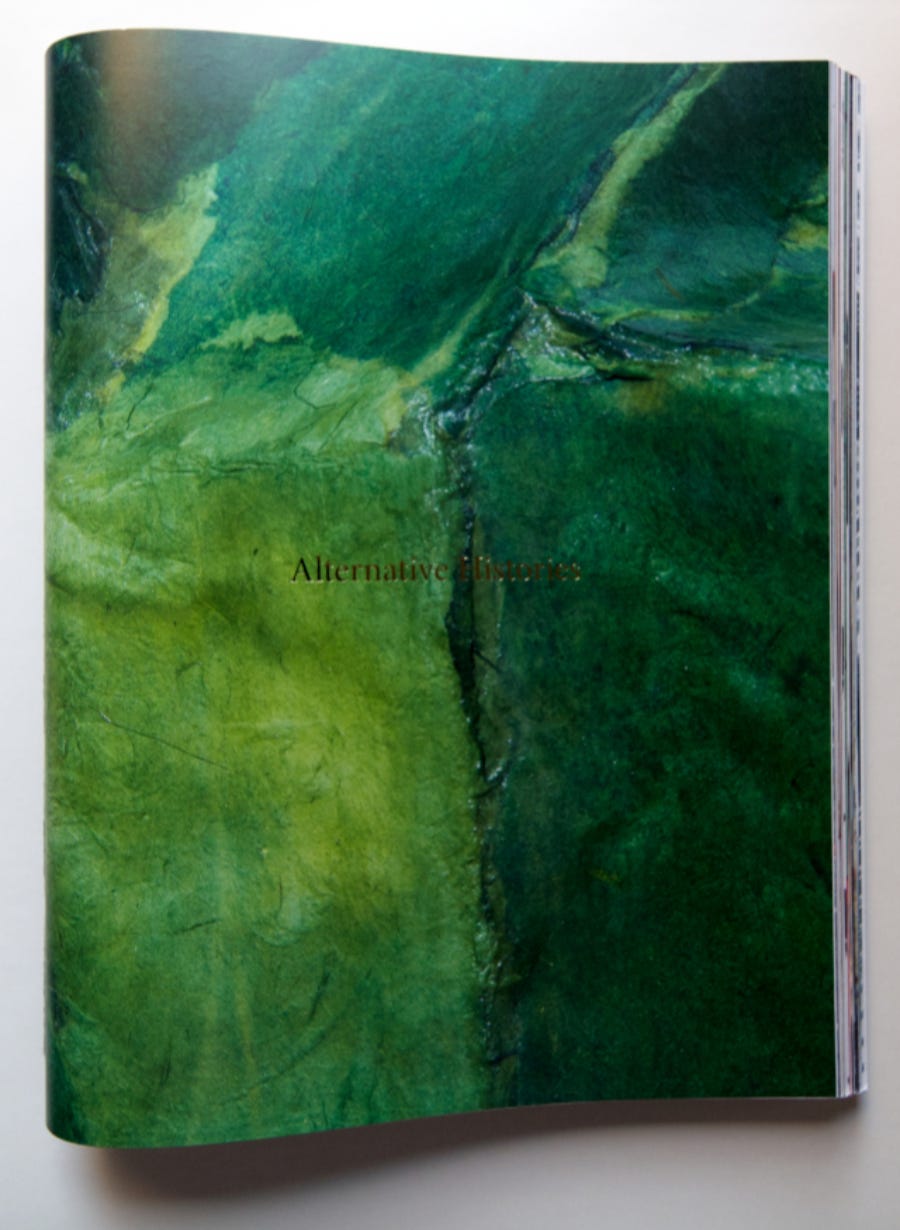This newsletter for the week of November 4 looks at the just released Days Without Number, the latest book by photographer Giovanna Silva. Its many photos and unconventional format — the tabloid sheets are folded and then bound with a plastic spiral at one end — has me thinking about other books with more photos than pages and unusual constructions; two of them are at the bottom of the newsletter. In between are the usual newly released books and headlines from the past week. Happy reading!
Book of the Week:
Days Without Number, New York City by Giovanna Silva, with a text by Sasha Frere-Jones (Buy from Head Hi [US] / from Mousse [IT])
Early in a recent architectural walking tour I gave across some residential streets in the Upper East Side, a patron asked me why the sky was much more visible here than in the Upper West Side, where she was coming from. I answered something to the effect that the UWS has more taller buildings and the UES has landmark districts that have kept blocks of townhouses intact. I can only imagine that the same woman, had she flipped through the 700 photos on Days Without Number’s 60 pages, would have asked photographer Giovanna Silva something similar, like “Where is the sky? Why is it absent in so many photos?” Most of Silva’s new book departs from her earlier books, which are mainly comprised of diptychs, in favor of pages covered with a grid of 16 photos alternating with occasional pages of large full-bleed photos; flip to any of the former pages and count how many of the photos show the sky — the number will be low to none each time.
I could have asked Silva myself, having gone to the Center for Architecture last week for co-publisher Head Hi’s launch of the book, but the answers are quite clear, right there on the pages, and hinted at in Sasha Frere-Jones’s humorous, stream-of-conscious contribution that begins the unconventional, folded, spiral-bound, tabloid-sized book. First, the photos came from Silva walking many miles in the city, therefore aiming her camera and smartphone at urban details where buildings meet streets, at eye level. Occasionally her lens looks upward, but it is rare. (One could also ask, “where are the people,” but Silva being an architectural photographer answers that question right away.) Second, with numerous buildings repeated, it is clear that Silva frequented particular neighborhoods — ones, like Midtown and the Financial District, with a lot of tall buildings and the sky only visible toward the rivers or by looking directly overhead. Third, and last, the photos in Days Without Number echo those in earlier Silva books, such as Mr. Bawa I Presume, in which images tend capture the experience of architecture rather than searching for iconic views of important works of architecture. New Yorkers will surely recognize many of the buildings in the new book, but outsiders will see very little in the way of familiar landmarks, given the prevalence of generic and occasionally quirky buildings within the frames.
The title Days Without Number echoes the format of the book, which resembles a calendar sans numbers and uses refrigerator magnets to make the layout less rigid than a straightforward grid, but also the way the hundreds of photos jump around in place and, I assume, in time, making Silva’s journey around the city dream-like. Silva commented during the book launch that she preferred taking photos, à la Bernd and Hilla Becher, on overcast rather than sunny days. This preference, combined with the sky only occasionally appearing, usually just in the corner of a photo, means the calendar-like book does not move from January to December, from season to season; instead, time — of day, of year — is removed from the photos, in favor of an anytime, or an eternal daytime (even Times Square is portrayed during the day).
One question remains for me: How many people want a book with 700 small photographs of New York City? It seems the answer is “not many,” and perhaps anticipating this, Silva and her co-publishers inserted a few large-format zoom photographs — the best images in the book, in my opinion — into the mix, adopted an unconventional production and layout that you can hopefully glean from the images accompanying this review, and managed to bring Sasha Frere-Jones into the mix; his text is short, but dense and layered with references that only New Yorkers will fully understand. Ultimately, it is the assemblage of photos more than any individual photos that makes the publication worthwhile, a bit like the output of the Bechers. Yet, while the Bechers explored industrial typology in their frontal photos (inspiring at least one documentation of one of the boroughs in the process), Silva’s street-level views capture the enormous multiplicity of its architectural expressions, the cacophony of its streets, and the litter of signs calling for attention — all of it unmistakably New York City.
Books Released This Week:
(In the United States, a curated list)
Architecture Transformed: The Digital Image in Architecture 1980–2020 by Hubert Locher, Dominik Lengyel, Florian Henrich and Catherine Toulouse (Buy from Birkhäuser / from Amazon / from Bookshop) — “The transition from the analogue to the digital age is analyzed on the basis of 51 design visualizations, from hand drawings to photomontage to computer renderings, in order to illustrate how architecture has been impacted by digital methods and media.”
The Art of Play: Designing the World's Greatest Playscapes by Emmy Watts (Buy from Hoxton Mini Press / from Amazon / from Bookshop) — “This photographic exploration of the world’s most imaginative and surprising playscapes spans artist-designed play sculptures, picturesque soft play spaces and wildly creative conceptual playgrounds, from Copenhagen to Canberra, via Bangkok and Beijing.”
Brutalist Japan: A Photographic Tour of Post-War Japanese Architecture by Paul Tulett (Buy from Prestel / from Amazon / from Bookshop) — “In over 200 dynamic and impeccable photographs [Tulett] captures the elements and paradoxes inherent in [Japanese Brutalist] buildings themselves: the rawness of concrete juxtaposed with elegant design; a harmonious integration into urban landscapes; and a global, modernist approach that maintains traditional Japanese elements.”
Don't Build, Rebuild: The Case for Imaginative Reuse in Architecture by Aaron Betsky (Buy from Beacon Press / from Amazon / from Bookshop) — “Betsky shows us contemporary imaginative reuse throughout the world: the Mexican housing authority transforming concrete slums into well-serviced apartments; the MassMOCA museum, built out of old textile mills; the squatted city of Christiana in Copenhagen, fashioned from an old army base; Project Heidelberg in Detroit.” (This book answers the query at the end of my review of Betsky’s previous book, The Monster Leviathan: Anarchitecture: “Who knows, maybe Betsky’s next book will take a stab at an (an)architecture of reuse and rehabilitation?”)
Heterogeneous Constructions: Studies in Mixed Material Architecture by Aaron Forrest, Yasmin Vobis and Brett Schneider (Buy from Birkhäuser / from Amazon / from Bookshop) — “This book takes a close look at a series of global building traditions and contemporary practices to uncover the possibilities and challenges of working with mixed materials.”
The Palladio Method : Draughtsman and Designer, Mason and Engineer. Learning from the Master edited by Thorsten Bürklin and Martin Ebert (Buy from transcript / from Amazon / from Bookshop) — “The contributions to this volume reflect on Palladio's method(s) beyond historism and style, and thus provide insights into design and building in our time.”
Full disclosure: As an Amazon Associate, AbeBooks Affiliate, and Bookshop.org Affiliate, I earn commissions from qualifying purchases made via any relevant links above and below.
Book News:
Drawing Matter has wrapped Richard Hall’s six-part OMA Conversations series, which began with “London—Foreplay” in April and has included excerpts and transcripts of conversations Hall had with members of OMA, illustrated with key drawings by the practice.
Read Lorenzo Degli Esposti’s review of Antonello Boschi’s Between the Building and the Street: A Phenomenology of the Facade (Quodlibet, 2023) at Architectural Record. Esposti writes : “[I] believe in the disciplinary status of architecture—and Boschi demonstrates why such specificity is necessary and useful for the precise moment in which we live.” (If that link is behind a paywall for you, you can read it on the publisher’s website.)
Mimi Zeiger finds Iwan Baan’s “photographs of the people and architecture of Vegas pair[ing] so seamlessly with his images of Rome, taken during a sunbaked heatwave in 2022,” in her review of Rome – Las Vegas: Bread and Circuses.
Over at World-Architects I rounded up nine books that signal “Other Ways of Making Books,” specifically via self-publishing, open-access, and alternative bindings; yes, Days Without Number is one of the last.
From the Archives:
Two books in my library jumped into my head when writing about Giovanna Silva’s Days Without Number. First, because of its similar folded format, is Alternative Histories, a catalog to the exhibition of the same name that opened at the Architecture Foundation in London in March 2019. The architects in the exhibition were asked to build new models inspired by old drawings from the collection of Drawing Matter, which also published the book. Alternative Histories is slightly larger and thicker than Days Without Number, and it is stitched at the fold instead of spiral-bound at one end, but given the rarity of books that are not glued or stitched then bound, I see these two books as kindreds. In each case format merges with content, resulting in beautiful objects that enrich what they display. Here is how I described Alternative Histories back in 2020:
“The presentation of the 85 paired drawings/models is straightforward but also very special. Each two-page spread is devoted to one pairing, with a drawing facing a model photo […] Throughout the book, the sketches and models flip from the left to the right on each turn of the page, with the model photographs on heavyweight glossy paper and the drawings on lighter matte pages. This left/right alternating structure happens because the roughly A3-size pages are stacked — alternating glossy and matte — then sewn down the middle and folded over to create the end product. There's no cutting or gluing turning this book into a typical bound volume. It's a simple but elegant book that exhibits its making, even displaying the knot for the sewn binding in the middle of the book […]”
The second book akin to Days Without Number is Reading the American Landscape: An Index of Books and Images, a large but surprisingly lightweight book made by The Netherlands Foundation for Visual Arts, Design and Architecture and published by the Netherlands Architecture Institute (NAi) in 2009. The Netherlands Foundation wanted to ambitiously “take stock of [the United States’] endlessly proliferating cityscapes and vast horizons,” and it did so through essays, photographs, and a bibliography. The 928-page book combines all three into seven chapters, each one looking at different themes or types of landscapes. (The book is so long, the table of contents is found on page 126!) Most of the book is comprised of photographs — more than 6,500 of them! — that were laid out by Irma Boom (long the go-to designer for books with unwieldy contents) with either one to a page or sixteen to a page, much like Days Without Number. The choice of newsprint keeps the book comparatively light but also mutes the colors of the photographs, which may have been intentional. Like Silva’s book, the accumulation and assemblage of the photos is the point, not the individual photos. The photos in Reading, free of captions but with an evident flow and rhythm across the chapters, thanks to groupings of similar subjects, capture the American landscape in all its contradictions: beautiful and ugly, intimate and vast, urban and rural, blooming and decaying, natural and artificial …
Thank you for subscribing to A Weekly Dose of Architecture Books. If you have any comments or questions, or if you have your own book that you want to see in this newsletter, please respond to this email, or comment below if you’re reading this online. All content is freely available, but paid subscriptions that enable this newsletter to continue are welcome — thank you!
— John Hill











I love Silva's work — photos AND publications — and am so glad you posted a review of her latest. Sounds trite and cliche but I am really, truly am inspired.